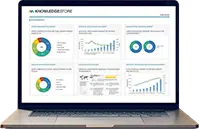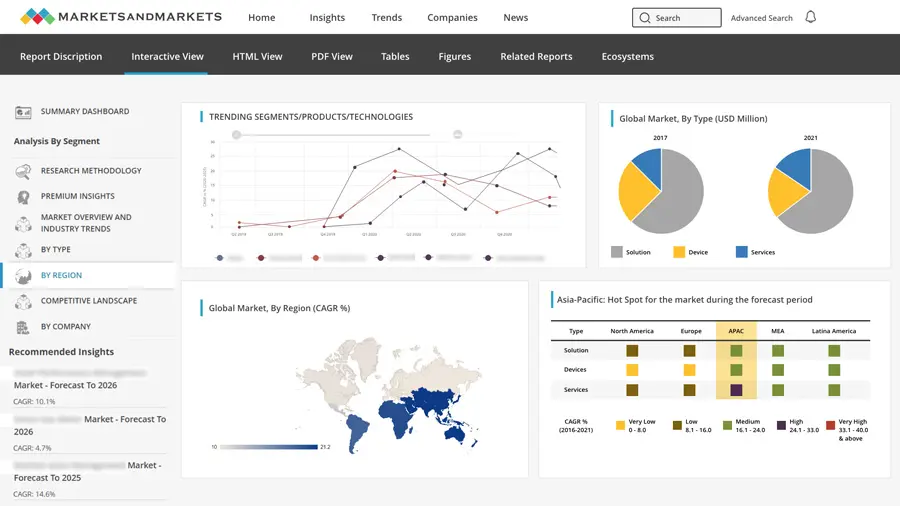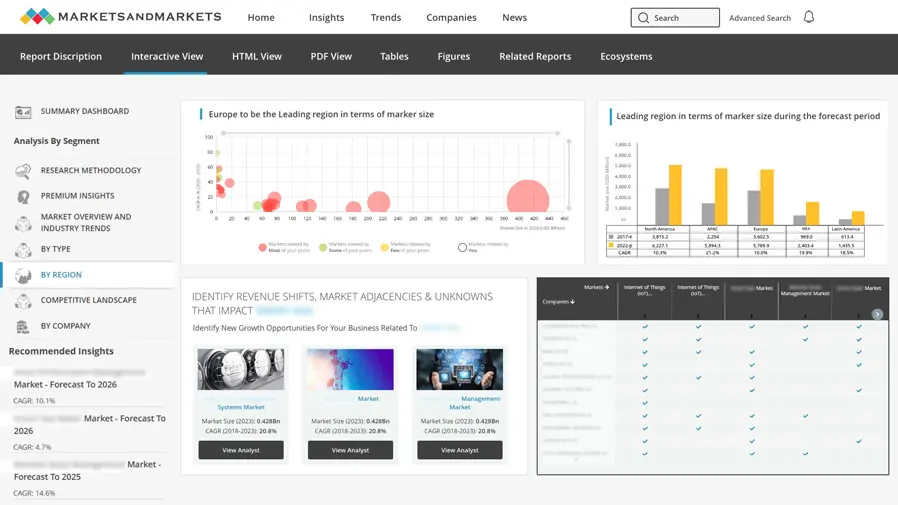Counter Hypersonic Market by Technology (Radar Warning, Signal Intelligence, Electronic Jamming), Offering (Hardware, Software, Services), Application (Threat Detection, Electronic Countermeasures, Electronic Support), End-Use Industry (Defense, Commercial Aviation, Homeland Security), and Region – Global Forecast to 2030
Overview
The Counter Hypersonic market focuses on developing systems capable of defending against hypersonic weapons, which are considered the next frontier of military threats. Hypersonic missiles can maneuver at incredibly high speeds, making them extremely difficult to intercept using traditional missile defense systems. Therefore, innovative technologies are being explored and developed to mitigate this threat.
- Market Overview: The Counter Hypersonic market is rapidly gaining traction as nations and defense sectors around the world recognize the growing threat posed by hypersonic weapons. These weapons travel at speeds greater than Mach 5, making them a significant challenge for current defense systems. The market for counter-hypersonic defense solutions, which includes technologies such as missile defense systems, directed energy, and kinetic interceptors, is expected to grow substantially over the next decade.
- Key Drivers: The primary drivers of this market include the increasing investments in defense technology, growing global security concerns, and the rapid development of hypersonic weapons by leading military powers. The need for effective countermeasures has led to advancements in radar, AI, and other advanced technologies.
- Market Opportunities: With increasing geopolitical tensions and advancements in hypersonic missile technology, there is a significant opportunity for defense contractors, technology providers, and government agencies to collaborate in developing next-generation countermeasures.
- Growth Rate: The market is expected to witness a robust growth rate over the forecast period (2024-2030), driven by the increasing demand for advanced missile defense systems. The compounded annual growth rate (CAGR) of this market is forecasted to be around, with global investments in defense technologies escalating.
- Technology Focus: Counter-hypersonic defense strategies involve a wide range of technologies, including advanced radar systems, AI-driven decision-making systems, kinetic interceptors, and directed energy weapons. The U.S., China, and Russia are key players in advancing these technologies.
Attractive Opportunities
The growth in the Counter Hypersonic market presents a number of lucrative opportunities:
- Development of Advanced Sensors and Radar Systems: As hypersonic missiles are characterized by their high speed and maneuverability, radar systems capable of detecting and tracking these objects are critical. Companies involved in radar technologies are likely to see significant growth as the need for countermeasures escalates.
- Artificial Intelligence and Machine Learning: The integration of AI in counter-hypersonic systems will help enhance tracking, targeting, and interception capabilities. AI can process vast amounts of data in real-time, which is essential in combating fast-moving threats.
- Directed Energy Weapons: Laser and microwave-based directed energy weapons are emerging as a promising solution to neutralize hypersonic missiles in their flight path. The market for directed energy systems is expected to experience substantial growth as these technologies mature.
- International Defense Partnerships: Many countries are recognizing the need for global defense collaboration. International partnerships in counter-hypersonic technologies will open opportunities for companies to expand their market presence.
- Emerging Nations’ Defense Spendings: Countries with growing defense budgets, especially in Asia-Pacific and the Middle East, present opportunities for market players to offer advanced hypersonic defense solutions.
Global Market Dynamics
The global dynamics of the Counter Hypersonic market are influenced by various factors:
- Rising Threat from Hypersonic Weapons: As countries like China, Russia, and the U.S. race to develop hypersonic missiles, there is a growing recognition of the need to develop countermeasures to defend against these threats. The development and deployment of these advanced weapons have spurred a sense of urgency in creating effective defense solutions.
- Technological Advancements: Advances in sensor technology, radar systems, and artificial intelligence are playing a pivotal role in shaping the counter-hypersonic market. The demand for more effective interceptors, which can engage targets at greater distances, is propelling the development of next-gen technologies.
- Government Defense Spending: The defense budgets of major powers, especially the U.S., are driving the research and development of counter-hypersonic technologies. With national security concerns at an all-time high, governments are increasing investments in defense systems designed to protect against hypersonic missiles.
- Collaborations and Partnerships: Given the complexity and cost of developing effective counter-hypersonic technologies, defense contractors are collaborating with governments and other research institutions to advance their capabilities.
- Public-Private Partnerships: The rise of public-private partnerships, where government entities and private defense companies jointly fund the development of defense technologies, is an emerging trend in the market.
Global Market Ecosystem Analysis
The Counter Hypersonic market is part of a broader defense ecosystem. This ecosystem includes various stakeholders, such as:
- Technology Providers: Companies developing advanced radar, AI, and sensor technologies are key players in this market.
- Defense Contractors: Large defense contractors like Lockheed Martin, Northrop Grumman, and Raytheon are investing heavily in counter-hypersonic technologies and are well-positioned to capture the majority of the market share.
- Government Agencies: Governments are the primary customers for counter-hypersonic systems, with the U.S. Department of Defense (DoD) leading the charge in developing and procuring these systems.
- Research Institutes: Institutions like DARPA (Defense Advanced Research Projects Agency) and other national defense research bodies are vital in driving innovation in this field.
Recent Developments of Market
Recent advancements in the market include:
- Development of Hypersonic Defense Systems: Several countries have successfully tested counter-hypersonic defense systems. For example, the U.S. Navy and the Missile Defense Agency have made strides in testing systems designed to intercept hypersonic missiles.
- International Collaborations: The U.S. has entered into multiple agreements with its allies, such as NATO, to jointly develop countermeasures for hypersonic weapons. These partnerships aim to enhance the collective defense capabilities against hypersonic threats.
- Research into Directed Energy Weapons: Companies and governments are making substantial progress in directed energy systems like high-powered lasers and electromagnetic pulses that can be used to disable or destroy hypersonic missiles.
Key Market Players
Some of the key players in the counter-hypersonic market include:
- Raytheon Technologies: One of the largest defense contractors globally, Raytheon is heavily invested in developing hypersonic defense systems.
- Northrop Grumman: Known for its missile defense technologies, Northrop Grumman is actively involved in hypersonic countermeasures.
- Lockheed Martin: A key player in missile defense systems, Lockheed is working on several counter-hypersonic projects, particularly focusing on kinetic interceptors and laser-based technologies.
- BAE Systems: With expertise in radar systems and AI technologies, BAE is involved in developing solutions to detect and neutralize hypersonic threats.
- L3 Technologies: A leader in sensor technologies, L3 Technologies is developing solutions for tracking and intercepting hypersonic missiles.

Want to explore hidden markets that can drive new revenue in Counter Hypersonic Market?
 Scope of the Report
Scope of the Report

Want to explore hidden markets that can drive new revenue in Counter Hypersonic Market?

This report provides an in-depth analysis of the global counter-hypersonic market, examining key technologies, end-use industries, and regional trends. The report covers the market dynamics, key players, and future outlook, offering valuable insights for industry stakeholders.
FAQ
- What are hypersonic weapons, and why are they a concern for global security? Hypersonic weapons are missiles that travel at speeds greater than Mach 5. They are difficult to track and intercept due to their speed and maneuverability, posing a significant threat to current defense systems.
- What technologies are being used in counter-hypersonic defense systems? Technologies such as advanced radar systems, AI, kinetic interceptors, and directed energy weapons like lasers are being developed to counter hypersonic threats.
- Which countries are leading the development of counter-hypersonic systems? The U.S., China, and Russia are the leaders in the development of counter-hypersonic technologies, with significant investments in missile defense systems.
- What are the key market opportunities in the counter-hypersonic market? Opportunities lie in the development of advanced sensors, AI-driven defense systems, directed energy weapons, and international defense collaborations.
- How will the counter-hypersonic market evolve over the next decade? The market is expected to grow significantly, driven by increasing investments in defense technologies, geopolitical tensions, and the ongoing advancements in hypersonic weaponry.

Table of Contents
-
Introduction
- Definition of Counter Hypersonic Market
- Scope of the Report
- Methodology and Research Approach
-
Market Overview
- Market Size and Forecast (2024-2030)
- Key Drivers and Restraints
- Market Trends and Insights
-
Global Market Dynamics
- Demand Drivers for Counter Hypersonic Solutions
- Technological Advancements
- Regulatory Environment
- Geopolitical Factors
-
Technology Analysis
- Radar Warning Systems
- Signal Intelligence Solutions
- Electronic Jamming Technologies
- Other Emerging Technologies (Directed Energy, Kinetic Interceptors)
-
Market Segmentation
-
By Technology
- Radar Warning
- Signal Intelligence
- Electronic Jamming
-
By Offering
- Hardware
- Software
- Services
-
By Application
- Threat Detection
- Electronic Countermeasures
- Electronic Support
-
By Technology
-
End-Use Industry Analysis
- Defense
- Commercial Aviation
- Homeland Security
-
Regional Analysis
- North America
- Europe
- Asia Pacific
- Middle East & Africa
- Latin America
-
Recent Developments in Counter Hypersonic Technology
- Government and Military Initiatives
- Partnerships and Collaborations
- Ongoing R&D in Countermeasures
-
Key Market Players
- Raytheon Technologies
- Lockheed Martin
- Northrop Grumman
- BAE Systems
- L3 Technologies
- Other Key Players
- Future Outlook and Market Opportunities
- Innovations in Counter Hypersonic Technologies
- Emerging Market Trends
- Strategic Recommendations














Growth opportunities and latent adjacency in Counter Hypersonic Market